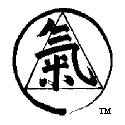“Why aren’t you more careful?”
“You’re an idiot.”
"You’re such a loser.”
I got bullied the other day at work. You would think that
someone with my background wouldn’t have a problem with bullies. People often joke with me when they find out
I have multiple black belts with comments like, “Note to self, be nice to
Richard.” Yes, somebody actually said
that.
But, the person that bullied me was just as accomplished as
me in the martial arts. In fact, he has
taken the very same classes as me. He
holds the same rank and is in every way my equal. You guessed it, the bully was me and I was
the target. The bully was my inner
bully. There are other names for this
person such as “the critical voice” or “inner parent”. But the commonality amongst them is a
complete intolerance for my being human and showing human weaknesses. This is true, to a greater or lesser extent, in
all of us.
One day a few weeks ago, I was tasked with several high
priority assignments that I knew nothing about prior to coming in to work that
day. With very little preparation, I
began to work on the tasks in order of importance. But, I began to run up against a time
limit. I had to leave work early in
order to pick up my son from school. I
had prearranged this with my supervisor, who is sensitive to my family
commitments. I worked faster, put more
pressure on myself and then I began to cut corners. I failed to have a document proofread prior
to sending it out. In my haste I did not
see some very glaring errors. I was
quickly made aware of the mistakes by some understanding colleagues. Retractions and corrections were made and
there was very little problem in the company except inside my own head.
I began to beat myself up for my mistakes and honestly
suffered a mild depression for about two days.
Eventually, I got mad at my inner bully, put him back in his place and
got on with my life. It was then that I
had an epiphany.
I have often read comments attached to news articles on the
web about the young people that commit bullycide (suicide in response to
extreme bullying) to the effect that the target was weak and probably would
have found some other reason to do something to themselves if it wasn’t for the
bully. I didn’t want to believe these
rather heartless commenters until I realized that they were almost right.
It isn’t the bully that kills these children. They, figuratively speaking, provide the
gun. But, it is the inner bully that
pulls the trigger. When children are in
their teen years they become increasingly outer directed, especially with their
peers. They are no longer as interested
in what Mom and Dad say. After all, they
love me because they are too stupid to know what I am really like. To most of us, this is just a passing phase
that we grow through.
But, to those children who are absolutely outer directed,
who need the opinions of others in order to create any kind of a self image,
negative input will be mulled over thousands and thousands of times until that
is the only voice they hear. If the
comments from their peers are extremely negative or if there is a threat of violence
against which the target feels defenseless, the inner bully will drone on until
nothing is left of their self-esteem or self-respect and they ultimately feel
they are doing the world a favor by removing their presence from it.
Let’s not be mistaken, this is the devil’s voice (or something
analogous to it) that these children are hearing. It speaks incessantly and will drive anyone
who listens to it insane. Couple this
with the fact that bullies can reach their targets even at home through the use
of cyberbullying , it is no wonder that teen suicide seems to reaching epidemic
proportions.
The only way to combat this negative din is with a positive
message of love, understanding and positive reinforcement. Once again, it is the responsibility of the
adults in each child’s life to be aware about what is going on in their world. We cannot sit idly by if we know that a child
is taking everything they hear about them directly to heart.
If you know someone that is in depression, thinking about
committing suicide, or is in the midst of doing it; these are the two things
you should say to them:
- We will get through this together.
- You are needed right here, right now.
The first statement tells them they are not alone. That at the very least they have you to
depend upon. The second tells them that
they have a purpose in this world and that they need to fulfill that purpose. It also tells them that they are loved by
others and those others need them.

